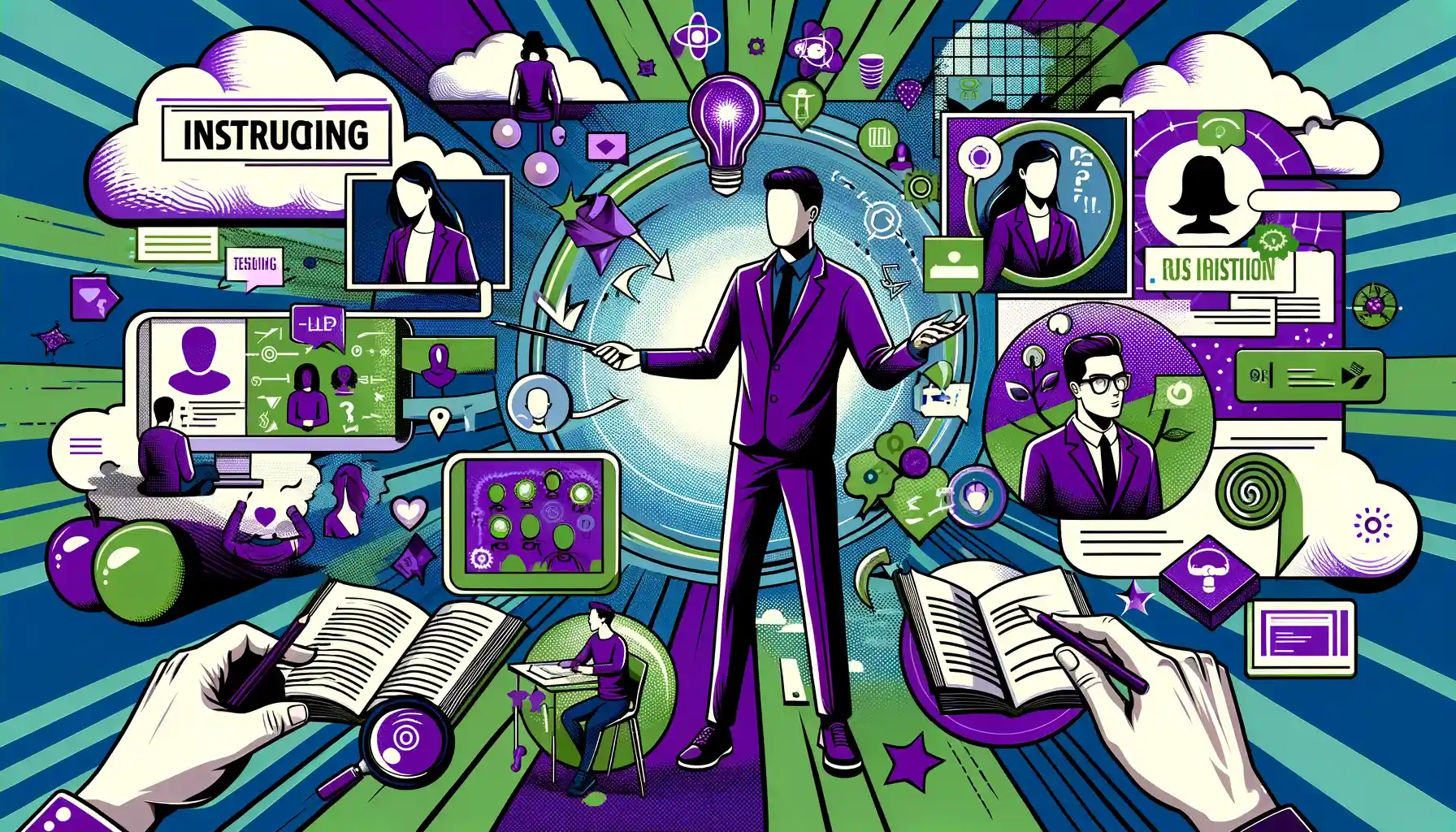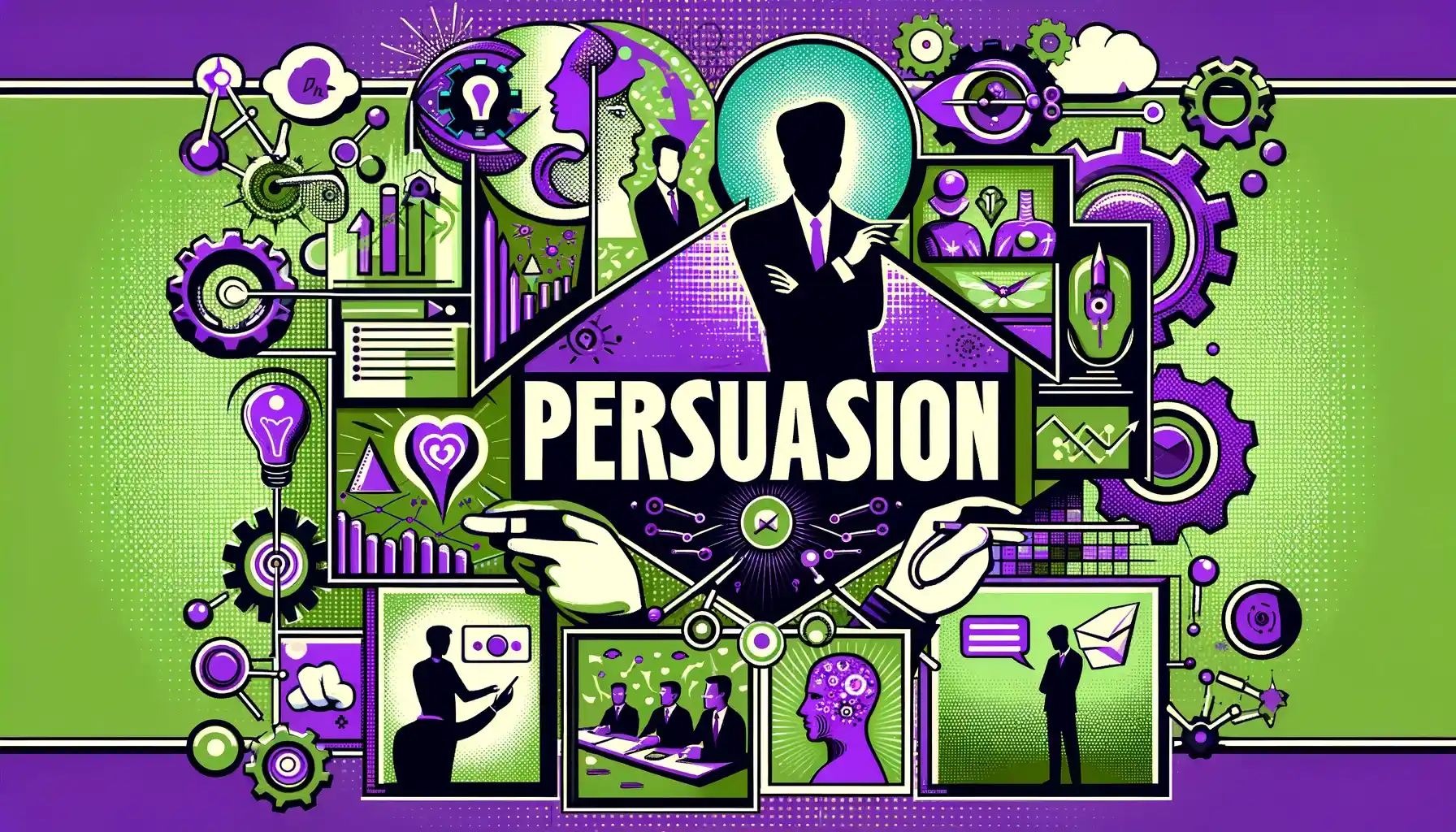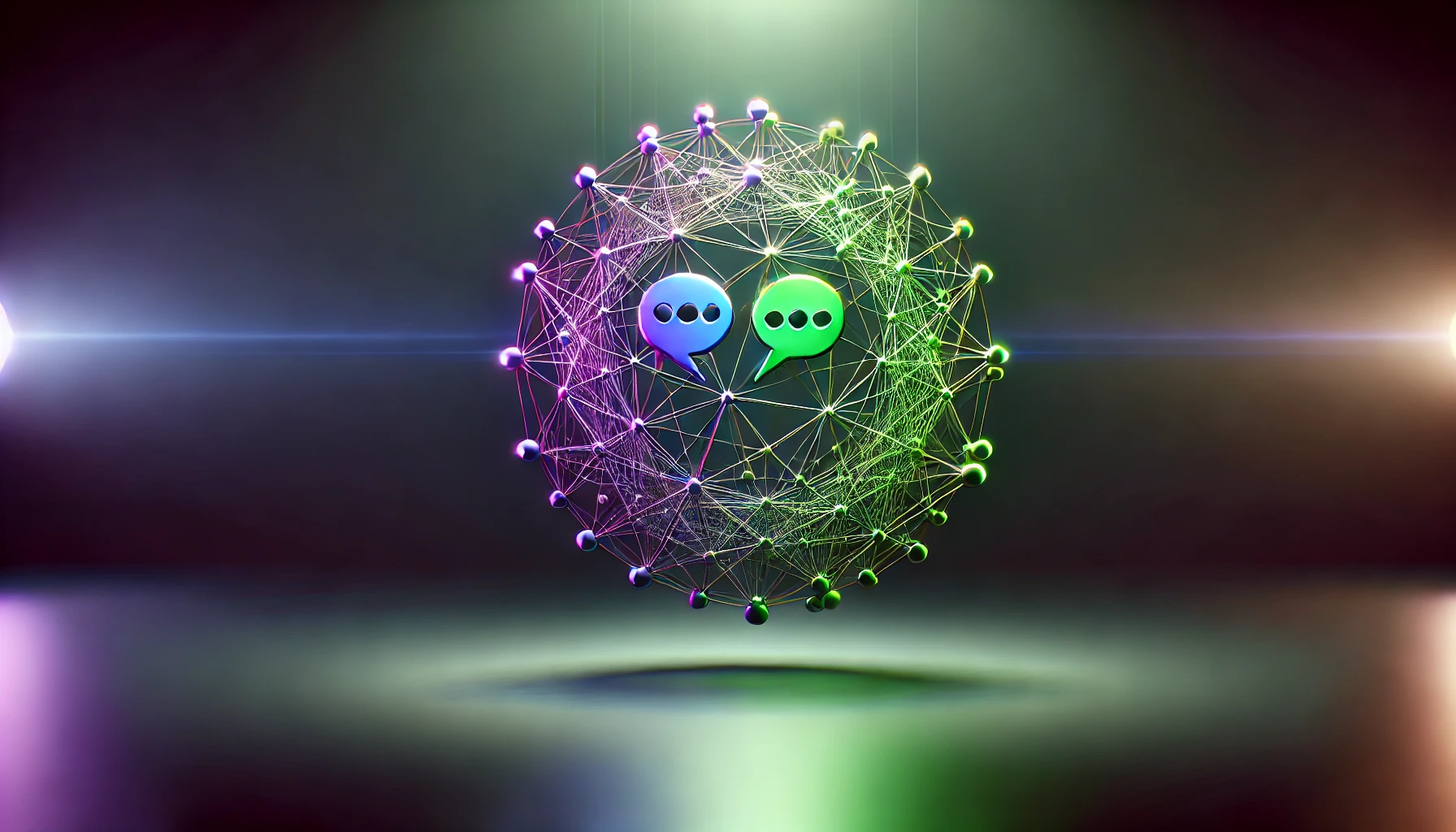Introduction to Public Interaction
<p><span style="font-weight: 400;">In today’s interconnected world, the art of public interaction is more crucial than ever. Whether delivering a presentation at work, participating in community events, or simply engaging in social gatherings, the ability to interact effectively with the public can significantly influence your personal and professional success. Public interaction goes beyond mere conversation; it involves a deep understanding of empathy, active listening, and the ability to engage with diverse groups. By mastering this skill, you can build stronger relationships, enhance your influence, and leave a lasting impact on the people around you. This skill is part of the “Communication” category of soft skills.</span></p>
<p><span style="font-weight: 400;">Public interaction is not just for extroverts or public figures; it is a vital skill for everyone. From the boardroom to the neighborhood block party, effective public interaction can open doors, foster community, and drive positive change. This article will explore the many facets of public interaction, offering practical tips and strategies to help you connect with others in meaningful ways. Whether you’re looking to improve your public speaking, enhance your community involvement, or simply become a more engaging conversationalist, this guide will provide you with the tools you need to succeed.</span></p>
<h4><strong>Definition of Public Interaction</strong></h4>
<p><span style="font-weight: 400;">Public interaction is the art and science of communicating, connecting, and engaging with groups of people in various settings. It encompasses activities such as public speaking, participating in community events, and everyday social interactions. This multifaceted skill blends verbal and non-verbal communication, emotional intelligence, and cultural awareness to forge meaningful connections with a broader audience. Unlike private interactions, public interaction often involves addressing and influencing a larger group, which requires a unique set of skills and approaches.</span></p>
<p><span style="font-weight: 400;">Imagine public interaction as a performance on a grand stage. Each gesture, word, and expression contributes to the overall impact, requiring the performer to be keenly aware of their audience. Just as a conductor harmonizes an orchestra, an effective communicator orchestrates their message to resonate with diverse listeners, creating a symphony of understanding and engagement.</span></p>
<h4><strong>Importance of Effective Public Interaction</strong></h4>
<p><span style="font-weight: 400;">Effective public interaction is a cornerstone of personal and professional success. It is the glue that holds communities together, the catalyst for career advancement, and the foundation for personal growth. By mastering public interaction, individuals can achieve the following:</span></p>
<ul>
<li style="font-weight: 400;" aria-level="1"><strong>Build Stronger Communities</strong><span style="font-weight: 400;">: Engaging effectively with the public fosters a sense of community and belonging. It brings people together, promoting collaboration and mutual support. For instance, community leaders who excel in public interaction can rally people around common goals, creating a unified and proactive community.</span></li>
<li style="font-weight: 400;" aria-level="1"><strong>Enhance Professional Opportunities</strong><span style="font-weight: 400;">: Strong public interaction skills can open doors to career advancements and new opportunities. Effective communicators are often seen as leaders, capable of inspiring and guiding teams. Consider the story of a young professional who, through powerful presentations and networking at industry events, catches the eye of senior executives and lands a pivotal promotion.</span></li>
<li style="font-weight: 400;" aria-level="1"><strong>Promote Inclusivity</strong><span style="font-weight: 400;">: Effective public interaction encourages inclusivity and understanding among diverse groups. It breaks down barriers, fosters dialogue, and creates environments where everyone feels valued and heard. For example, a teacher adept at public interaction can create an inclusive classroom where every student feels engaged and respected.</span></li>
<li style="font-weight: 400;" aria-level="1"><strong>Influence and Inspire</strong><span style="font-weight: 400;">: Public interaction allows individuals to influence and inspire others, driving collective action and positive change. Leaders like Martin Luther King Jr. and Malala Yousafzai have used their exceptional public interaction skills to inspire movements and advocate for social justice. Their ability to connect with audiences on a profound level has sparked significant societal shifts.</span></li>
</ul>
<p><span style="font-weight: 400;">As <a class='no-underline text-accent'
href="https://en.wikipedia.org/wiki/Ralph_Waldo_Emerson" target="_blank">Ralph Waldo Emerson</a> once said, "Speech is power: speech is to persuade, to convert, to compel." Effective public interaction is not merely about speaking; it’s about making a difference. It’s the bridge between ideas and action, between individuals and the community, and between leaders and change.</span></p>
<p><span style="font-weight: 400;">By investing in the development of public interaction skills, individuals can harness the power of communication to build stronger relationships, seize professional opportunities, and inspire positive change in their communities and beyond.</span></p> Benefits of Effective Public Interaction
<p><span style="font-weight: 400;">The benefits of mastering public interaction are extensive and varied, touching nearly every aspect of personal and professional life. Here are some key advantages that highlight why developing this skill is essential:</span></p>
<h4><strong>Enhanced Community Cohesion:</strong><span style="font-weight: 400;"> Effective public interaction plays a vital role in building and strengthening communities. When individuals actively engage with the public, they foster a sense of unity and belonging. Consider a local community leader who organizes regular town hall meetings. By encouraging open dialogue and participation, they help create a cohesive community where members feel heard and valued. This engagement can lead to collaborative efforts that address local issues, improve community resources, and enhance overall quality of life.</span></h4>
<h4><strong>Increased Influence and Leadership: </strong><span style="font-weight: 400;">Public interaction skills are a cornerstone of effective leadership. Leaders who excel in engaging with the public can inspire, motivate, and guide their teams more effectively. For instance, a CEO who communicates clearly and empathetically during a company-wide meeting can boost morale, align the organization towards common goals, and foster a culture of transparency and trust. Such leaders are often more influential, as their ability to connect with people on a personal level enhances their credibility and authority.</span></h4>
<h4><strong>Personal and Professional Growth:</strong><span style="font-weight: 400;"> Engaging with diverse groups through public interaction broadens one's perspective, leading to significant personal and professional growth. By interacting with people from different backgrounds and viewpoints, individuals can expand their understanding and develop more inclusive and innovative approaches. For example, a professional who participates in industry conferences and networking events can gain insights from peers, learn about emerging trends, and apply new ideas to their work, thereby advancing their career.</span></h4>
<h4><strong>Greater Empathy and Understanding:</strong><span style="font-weight: 400;"> Public interaction fosters empathy and understanding by exposing individuals to a variety of perspectives and experiences. This exposure helps people appreciate the challenges and triumphs of others, promoting a more compassionate and inclusive environment. A teacher, for instance, who engages with students and their families through regular meetings and community events can better understand their needs and tailor educational approaches to support each student effectively.</span></h4>
<h4><strong>Improved Communication Skills: </strong><span style="font-weight: 400;">Regular public engagement hones one's communication abilities, making interactions more effective and meaningful. By practicing public speaking, active listening, and clear articulation, individuals can enhance their ability to convey ideas and connect with others. Consider a salesperson who frequently presents to clients and participates in trade shows. Their continuous interaction with diverse audiences sharpens their ability to communicate persuasively, listen to customer needs, and build lasting relationships.</span></h4>
<p> </p>
<p><span style="font-weight: 400;">The benefits of effective public interaction are profound and far-reaching. They include enhanced community cohesion, increased influence and leadership, personal and professional growth, greater empathy and understanding, and improved communication skills. By investing in and developing these skills, individuals can significantly impact their communities, advance their careers, and foster more meaningful and productive relationships. Public interaction is not just a skill but a powerful tool for creating positive change in the world.</span></p>Developing the Skill of Public Interaction
<p><span style="font-weight: 400;">Developing public interaction skills requires deliberate practice and a willingness to step out of one's comfort zone. These skills are not innate for everyone but can be cultivated with dedication and the right approach. Here are some strategies to enhance your public interaction abilities:</span></p>
<h4><strong>Cultivate Emotional Intelligence</strong></h4>
<p><span style="font-weight: 400;">Emotional intelligence is the foundation of effective public interaction. It involves understanding and managing your own emotions as well as those of others. By developing emotional intelligence, you can better navigate social dynamics, respond empathetically, and build stronger connections. For example, a community organizer who recognizes the concerns and feelings of diverse groups can address issues more sensitively and effectively.</span></p>
<p><span style="font-weight: 400;">Practice self-reflection to become more aware of your emotional responses. Engage in activities that enhance empathy, such as volunteering or participating in group discussions where you listen actively to others' experiences.</span></p>
<h4><strong>Practice Active Listening</strong></h4>
<p><span style="font-weight: 400;"><a class='no-underline text-accent'
href="https://www.wiseworld.ai/blog/active-listening" target="_blank">Active listening</a> is a crucial component of effective communication. It involves fully concentrating on the speaker, understanding their message, and responding thoughtfully. By practicing active listening, you show respect and appreciation for others' viewpoints, which fosters trust and engagement.</span></p>
<p><span style="font-weight: 400;">During conversations, focus entirely on the speaker without interrupting. Reflect back what you’ve heard by summarizing their points and asking clarifying questions. This demonstrates that you value their input and are engaged in the discussion.</span></p>
<h4><strong>Show Genuine Interest</strong></h4>
<p><span style="font-weight: 400;">Demonstrating genuine curiosity and concern for others' perspectives and experiences can significantly enhance public interaction. People are more likely to engage with and respond positively to someone who shows sincere interest in their thoughts and feelings.</span></p>
<p><span style="font-weight: 400;">Ask open-ended questions that encourage others to share more about themselves. For instance, instead of asking, "Did you enjoy the event?" try, "What was your favorite part of the event, and why?" This opens the door to deeper, more meaningful conversations.</span></p>
<h4><strong>Be Authentic</strong></h4>
<h4><span style="font-weight: 400;">Authenticity builds trust and fosters deeper connections. When you are genuine in your interactions, people are more likely to respond positively and engage with you. Authenticity means being true to yourself, expressing your thoughts and feelings honestly, and not trying to be someone you’re not.</span></h4>
<p><span style="font-weight: 400;">Share your personal stories and experiences when appropriate. This helps others see you as relatable and genuine. Avoid pretending to agree with something you don’t believe in just to fit in or please others.</span></p>
<h4><strong>Communicate Clearly and Effectively</strong></h4>
<h4><span style="font-weight: 400;">Clear, concise communication is key to effective public interaction. Whether you are speaking to a large audience or having a one-on-one conversation, the ability to articulate your ideas clearly and confidently can significantly enhance your interactions.</span></h4>
<p><span style="font-weight: 400;">Practice your speaking skills regularly. This could involve joining a public speaking club, such as Toastmasters, or simply rehearsing your presentations in front of friends or family. Focus on structuring your messages logically and avoiding jargon or overly complex language.</span></p>
<p><span style="font-weight: 400;">Developing the skill of public interaction is a continuous journey that requires dedication, practice, and a genuine interest in others. By cultivating emotional intelligence, practicing active listening, showing genuine interest, being authentic, and communicating clearly, you can significantly enhance your ability to engage effectively with the public. These skills not only improve your personal and professional interactions but also help you build stronger, more meaningful connections with those around you.</span></p>Training to Improve Public Interaction
<p><span style="font-weight: 400;">Improving your public interaction skills requires practical experience and active engagement. The best way to enhance these skills is to put yourself in situations where you interact with the public. Consider joining an NGO, attending church, going to bars, clubs, or the gym—anywhere you feel comfortable. These environments serve as excellent arenas to practice and refine your public interaction abilities.</span></p>
<h4><strong>Role-Playing Game: "Debatable"</strong></h4>
<p><span style="font-weight: 400;">One effective training exercise is a role-playing game called "<a class='no-underline text-accent'
href="https://boardgamegeek.com/boardgame/227026/debatable" target="_blank">Debatable</a>." This game can be played with pen and paper.</span></p>
<p><strong>Setup:</strong></p>
<ul>
<li style="font-weight: 400;" aria-level="1"><strong>Point of View Cards:</strong><span style="font-weight: 400;"> Write down various roles on cards, such as Pop Star, Bartender, Footballer, Homemaker, Retailer, etc. Create at least 10 cards.</span></li>
<li style="font-weight: 400;" aria-level="1"><strong>Subject Cards:</strong><span style="font-weight: 400;"> Write down various topics that have diverse opinions and no clear majority consensus. Examples include colonization, gay marriage, vegan diets, data leaks, etc. Create at least 10 cards.</span></li>
</ul>
<p><strong>Gameplay:</strong></p>
<ul>
<li style="font-weight: 400;" aria-level="1"><span style="font-weight: 400;">The game is turn-based. In each turn, a player randomly chooses a card from the "Point of View" deck. The other players then choose a "Subject" card for them based on the selected point of view.</span></li>
<li style="font-weight: 400;" aria-level="1"><span style="font-weight: 400;">The player must then discuss or debate the subject from the perspective of their point of view card.</span></li>
</ul>
<p><strong>Scoring:</strong></p>
<ul>
<li style="font-weight: 400;" aria-level="1"><span style="font-weight: 400;">After each player’s turn, the other players rate them on a scale of 1-5 by simultaneously raising their hands and showing their score. The scores are based on the relevance of the context and the effectiveness of the speaker’s demonstration.</span></li>
<li style="font-weight: 400;" aria-level="1"><span style="font-weight: 400;">The game continues for at least one round, ensuring that each player has a turn to speak.</span></li>
</ul>
<h4><strong>Establish Your Tribe</strong></h4>
<p><span style="font-weight: 400;">In today's world, while we are far from the tribal era, we still form communities around shared interests and identities. We often hear phrases like "we who prefer beer," "we who support the Barcelona football team," or "we who love to put Legos on our desks." These modern tribes are powerful tools for public interaction training.</span></p>
<p><span style="font-weight: 400;">One actionable training exercise is to start your tribe. This could be a Facebook group, an Instagram page, or an account on another social media platform. It doesn't have to be complicated. For instance, one of the earliest Facebook pages I saw was "M&M Peanut Fans," which had over 300,000 users discussing how they eat M&M peanuts—whether to split them in half first or just chew them.</span></p>
<p><span style="font-weight: 400;">The topic of your tribe isn't important for this exercise. Choose a subject you are passionate about and use it to empower and train yourself to influence the public. By leading a group and engaging with its members, you'll develop essential public interaction skills, such as communication, empathy, and leadership.</span></p>
<p><span style="font-weight: 400;">By immersing yourself in these practical experiences and actively seeking opportunities to engage with diverse groups, you can significantly improve your public interaction skills, making you a more effective and confident communicator. </span></p>Public Interaction in Different Working Scenarios
<p><span style="font-weight: 400;">Public interaction varies significantly across different contexts, and mastering this skill can enhance both your personal and professional life. Here are some examples of public interaction in various settings:</span></p>
<h4><strong>Professional Settings</strong></h4>
<p><span style="font-weight: 400;">In professional environments, effective public interaction is crucial for career advancement and fostering a positive workplace culture. Key scenarios include:</span></p>
<ul>
<li style="font-weight: 400;" aria-level="1"><strong>Engaging with Colleagues:</strong><span style="font-weight: 400;"> Building rapport and maintaining open communication with colleagues is essential. This involves not just speaking but also actively listening and showing empathy. As <a class='no-underline text-accent'
href="https://en.wikipedia.org/wiki/Dale_Carnegie" target="_blank">Dale Carnegie</a> said, "You can make more friends in two months by becoming interested in other people than you can in two years by trying to get other people interested in you."</span></li>
<li style="font-weight: 400;" aria-level="1"><strong>Presenting in Meetings:</strong><span style="font-weight: 400;"> Delivering clear and compelling presentations can set you apart. Prepare thoroughly, understand your audience, and engage them with stories or data that resonate. Remember, "The success of your presentation will be judged not by the knowledge you send but by what the listener receives" (<a class='no-underline text-accent'
href="https://www.wcspeakers.com/speaker/lilly-walters/" target="_blank">Lilly Walters</a>).</span></li>
<li style="font-weight: 400;" aria-level="1"><strong>Networking at Industry Events:</strong><span style="font-weight: 400;"> Networking is an opportunity to build connections that can lead to new opportunities. Approach networking with a genuine interest in others, ask open-ended questions and share your own experiences succinctly.</span></li>
</ul>
<h4><strong>Community Events</strong></h4>
<p><span style="font-weight: 400;">Public interaction in community settings helps foster a sense of belonging and collective purpose. Key scenarios include:</span></p>
<ul>
<li style="font-weight: 400;" aria-level="1"><strong>Participating in Local Activities:</strong><span style="font-weight: 400;"> Engaging in local events, such as festivals, markets, or neighborhood clean-ups, allows you to connect with your community. Your participation shows your commitment to the community’s well-being.</span></li>
<li style="font-weight: 400;" aria-level="1"><strong>Speaking at Community Gatherings:</strong><span style="font-weight: 400;"> Whether at town hall meetings or local clubs, speaking publicly can influence and inspire your community. "In the end, it's not the years in your life that count. It's the life in your years" (Abraham Lincoln). Sharing your vision can motivate others to take action.</span></li>
<li style="font-weight: 400;" aria-level="1"><strong>Volunteering:</strong><span style="font-weight: 400;"> Volunteering your time and skills not only benefits those in need but also builds your network and enhances your empathy and interpersonal skills. Engaging in such activities can be deeply rewarding and impactful.</span></li>
</ul>
<h4><strong>Social Gatherings</strong></h4>
<p><span style="font-weight: 400;">Social gatherings are perfect opportunities to practice and refine your public interaction skills in a more relaxed environment. Key scenarios include:</span></p>
<ul>
<li style="font-weight: 400;" aria-level="1"><strong>Interacting at Parties:</strong><span style="font-weight: 400;"> At social events, being approachable and showing interest in others can make you a more engaging conversationalist. Avoid dominating the conversation and focus on building genuine connections.</span></li>
<li style="font-weight: 400;" aria-level="1"><strong>Family Events:</strong><span style="font-weight: 400;"> Family gatherings can be a test of patience and diplomacy. It's important to navigate these interactions with sensitivity and understanding, recognizing that family dynamics can be complex.</span></li>
<li style="font-weight: 400;" aria-level="1"><strong>Other Social Occasions:</strong><span style="font-weight: 400;"> From weddings to casual meet-ups, these events offer opportunities to meet new people and strengthen existing relationships. Remember, "The best way to find yourself is to lose yourself in the service of others" (Mahatma Gandhi).</span></li>
</ul>
<h3><strong>Additional Tips for Effective Public Interaction</strong></h3>
<p><strong>Be Authentic:</strong><span style="font-weight: 400;"> Authenticity fosters trust and respect. People are more likely to engage with you if they feel you are genuine.</span></p>
<p><strong>Practice Empathy:</strong><span style="font-weight: 400;"> Understanding and sharing the feelings of others can greatly enhance your interactions. Empathy builds deeper connections.</span></p>
<p><strong>Stay Informed:</strong><span style="font-weight: 400;"> Being knowledgeable about current events and topics of interest to your audience can make your interactions more engaging and relevant.</span></p>
<p><strong>Use Positive Body Language:</strong><span style="font-weight: 400;"> Non-verbal cues like eye contact, smiling, and nodding can make your interactions more positive and affirming.</span></p>
<p><strong>Seek Feedback:</strong><span style="font-weight: 400;"> Constructive feedback from others can help you improve your public interaction skills. Don’t be afraid to ask for it.</span></p>
<p><span style="font-weight: 400;">Public interaction is a vital skill across various scenarios, from professional settings and community events to social gatherings. By mastering the art of engaging with the public, you can enhance your relationships, influence others, and create meaningful connections that contribute to your personal and professional growth. As you practice and refine these skills, you'll find that effective public interaction can open doors to new opportunities and enrich your life in countless ways.</span></p>Overcoming Barriers to Public Interaction
<p><span style="font-weight: 400;">Public interaction can be daunting due to various barriers such as social anxiety, cultural differences, and lack of experience. However, by employing specific strategies, you can overcome these obstacles and improve your ability to engage effectively with others. Here are some practical tips to help you navigate these challenges:</span></p>
<h4><strong>Addressing Social Anxiety</strong></h4>
<p><span style="font-weight: 400;">Social anxiety is a common barrier to effective public interaction. It can cause discomfort and fear in social settings, making it difficult to engage confidently. Here are strategies to manage and overcome social anxiety:</span></p>
<ul>
<li style="font-weight: 400;" aria-level="1"><strong>Practice Relaxation Techniques:</strong><span style="font-weight: 400;"> Techniques such as deep breathing, meditation, and progressive muscle relaxation can help calm your nerves. Before engaging in public interaction, take a few moments to relax and center yourself. As Eleanor Roosevelt said, "Do one thing every day that scares you." Gradual exposure to social situations can desensitize your anxiety over time.</span></li>
<li style="font-weight: 400;" aria-level="1"><strong>Gradual Exposure:</strong><span style="font-weight: 400;"> Start by interacting in low-stakes environments and gradually move to more challenging settings. Begin with small gatherings and progressively increase the size and formality of the events you attend.</span></li>
<li style="font-weight: 400;" aria-level="1"><strong>Positive Visualization:</strong><span style="font-weight: 400;"> Visualize successful interactions before they happen. Imagine yourself speaking confidently and receiving positive responses. This mental practice can build your confidence and reduce anxiety.</span></li>
</ul>
<h4><strong>Embracing Cultural Differences</strong></h4>
<p><span style="font-weight: 400;">Cultural differences can present significant barriers to effective public interaction. Understanding and respecting these differences is crucial for meaningful engagement. Here’s how to navigate cultural diversity:</span></p>
<ul>
<li style="font-weight: 400;" aria-level="1"><strong>Learn About Different Cultures:</strong><span style="font-weight: 400;"> Educate yourself about the cultural norms, values, and practices of the people you interact with. This knowledge can prevent misunderstandings and show respect for their backgrounds.</span></li>
<li style="font-weight: 400;" aria-level="1"><strong>Show Respect and Openness:</strong><span style="font-weight: 400;"> Approach cultural differences with respect and an open mind. Avoid making assumptions and be willing to learn from others. As Maya Angelou wisely stated, "We all should know that diversity makes for a rich tapestry, and we must understand that all the threads of the tapestry are equal in value."</span></li>
<li style="font-weight: 400;" aria-level="1"><strong>Adapt Your Communication Style:</strong><span style="font-weight: 400;"> Be mindful of how cultural differences influence communication styles. Some cultures may value direct communication, while others may prefer a more indirect approach. Adapting your style to suit the cultural context can enhance your interactions.</span></li>
</ul>
<h4><strong>Gaining Experience</strong></h4>
<p><span style="font-weight: 400;">Lack of experience can hinder your ability to engage effectively with the public. The more you practice, the more comfortable and skilled you will become. Here are ways to gain valuable experience:</span></p>
<ul>
<li style="font-weight: 400;" aria-level="1"><strong>Join Clubs and Organizations:</strong><span style="font-weight: 400;"> Participate in clubs, societies, or organizations that align with your interests. These groups provide structured environments for public interaction and opportunities to practice your skills.</span></li>
<li style="font-weight: 400;" aria-level="1"><strong>Volunteer:</strong><span style="font-weight: 400;"> Volunteering is an excellent way to engage with diverse groups of people. It not only builds your public interaction skills but also contributes to your community. As Winston Churchill said, "<strong>We make a living by what we get, but we make a life by what we give.</strong>"</span></li>
<li style="font-weight: 400;" aria-level="1"><strong>Attend Social Events:</strong><span style="font-weight: 400;"> Regularly attending social events, such as community gatherings, networking events, or social meet-ups, can provide ample opportunities to practice and refine your public interaction skills.</span></li>
</ul>
<h3><strong>Additional Tips for Overcoming Barriers</strong></h3>
<ul>
<li style="font-weight: 400;" aria-level="1"><strong>Seek Feedback:</strong><span style="font-weight: 400;"> Constructive feedback from friends, mentors, or colleagues can provide valuable insights into your public interaction skills and areas for improvement.</span></li>
<li style="font-weight: 400;" aria-level="1"><strong>Set Realistic Goals:</strong><span style="font-weight: 400;"> Set small, achievable goals for improving your public interaction skills. Celebrate your progress and gradually increase the difficulty of your goals.</span></li>
<li style="font-weight: 400;" aria-level="1"><strong>Stay Patient and Persistent:</strong><span style="font-weight: 400;"> Overcoming barriers to public interaction takes time and effort. Be patient with yourself and persistent in your practice.</span></li>
</ul>
<p><span style="font-weight: 400;">Overcoming barriers to public interaction, such as social anxiety, cultural differences, and lack of experience, is essential for effective communication and engagement. By addressing social anxiety through relaxation techniques and gradual exposure, embracing cultural differences with respect and openness, and gaining experience through active participation, you can enhance your public interaction skills. Remember, every interaction is an opportunity to learn and grow. As you continue to practice and refine these skills, you'll find yourself more confident and effective in engaging with others, leading to richer personal and professional relationships.</span></p>Real-life Examples of Effective Public Interaction
<p><span style="font-weight: 400;">Real-life examples can provide valuable insights into effective public interaction. By examining these cases, we can understand the strategies and techniques that successful individuals and teams use to connect with their audiences and make a significant impact.</span></p>
<h4><strong>Case Studies of Successful Individuals Demonstrating Public Interaction</strong></h4>
<p><strong>Thomas Edison and Public Perception of Electricity:</strong><span style="font-weight: 400;"> In the late 19th century, Thomas Edison faced public skepticism and fear about the safety of electricity. To combat these fears, Edison staged public demonstrations to show the safety and benefits of electric light. He illuminated entire city blocks and held public exhibitions, making electricity less intimidating and more appealing to the masses. His ability to engage with the public through clear, hands-on demonstrations helped shift public perception and accelerated the adoption of electric lighting, transforming modern society.</span></p>
<p><strong>Mahatma Gandhi’s Salt March:</strong><span style="font-weight: 400;"> Mahatma Gandhi’s <a class='no-underline text-accent'
href="https://en.wikipedia.org/wiki/Salt_March" target="_blank">Salt March</a> in 1930 was a pivotal moment in India’s struggle for independence from British rule. Gandhi's 240-mile march to the Arabian Sea to make salt in defiance of British laws was a masterful act of public interaction. He connected with millions of Indians, drawing attention to the injustice of colonial rule and galvanizing a nation to engage in nonviolent protest. Gandhi’s approach showed how strategic public interaction could inspire collective action and drive significant social change.</span></p>
<p><strong>Tarana Burke and the Me Too Movement:</strong><span style="font-weight: 400;"> Tarana Burke, the founder of the <a class='no-underline text-accent'
href="https://www.britannica.com/biography/Tarana-Burke#:~:text=Tarana%20Burke%20(born%20September%2012,violence%2C%20especially%20females%20of%20colour." target="_blank">Me Too movement</a>, utilized the power of public interaction to bring global awareness to the issue of sexual harassment and assault. Starting as a grassroots movement in 2006, Me Too gained international prominence in 2017 when actress Alyssa Milano used the hashtag #MeToo on Twitter. This public interaction highlighted the prevalence of sexual violence and empowered millions to share their stories. Burke’s ability to create a safe space for survivors to speak out has led to widespread societal and cultural shifts, making workplaces and communities more aware and supportive.</span></p>
<h4><strong>Stories of Teams or Individuals Thriving Through Public Interaction</strong></h4>
<p><strong>The Civil Rights Movement:</strong><span style="font-weight: 400;"><a class='no-underline text-accent' href="https://www.bbc.co.uk/bitesize/articles/zq9hp4j#:~:text=During%20the%201950s%20and%201960s,Court%20rulings%20to%20end%20segregation."> The American Civil Rights Movement</a> of the 1950s and 1960s is a profound example of effective public interaction. Leaders like Martin Luther King Jr. used speeches, marches, and nonviolent protests to engage the public and draw attention to the injustices faced by African Americans. The March on Washington for Jobs and Freedom, where King delivered his iconic "I Have a Dream" speech, is a landmark moment demonstrating how public interaction can unite people and catalyze social change. The movement’s success in securing civil rights legislation was largely due to its leaders’ ability to connect with and mobilize the public.</span></p>
<p><strong>Las Madres de Plaza de Mayo:</strong><span style="font-weight: 400;"> In Argentina, the mothers of the "<a class='no-underline text-accent'
href="https://apnews.com/article/argentina-disappeared-mothers-of-plaza-de-mayo-dictatorship-45ce0f55238e9a60548825f3deb3fb32" target="_blank">disappeared</a>"—victims of forced disappearances during the military dictatorship—became powerful symbols of resistance and public interaction. Starting in 1977, these women began marching in the Plaza de Mayo in Buenos Aires, wearing white headscarves embroidered with the names of their lost children. Their persistent public demonstrations drew international attention to human rights abuses in Argentina. Their courage and unwavering public presence highlighted the power of grassroots activism in demanding justice and accountability.</span></p>
<p><strong>Live Aid Concerts:</strong><span style="font-weight: 400;"> In 1985, the <a class='no-underline text-accent'
href="https://www.britannica.com/event/Live-Aid" target="_blank">Live Aid concerts</a>, organized by Bob Geldof and Midge Ure, brought together musicians from around the world to raise funds for famine relief in Ethiopia. Broadcast globally, these concerts were a powerful demonstration of how public interaction through music and media could inspire global awareness and action. The event not only raised substantial funds but also highlighted the potential of leveraging public interaction for humanitarian causes.</span></p>
<p><span style="font-weight: 400;">Lessons from These Examples, These real-life examples illustrate several key strategies for effective public interaction:</span></p>
<ul>
<li style="font-weight: 400;" aria-level="1"><strong>Hands-On Demonstrations:</strong><span style="font-weight: 400;"> Thomas Edison’s public demonstrations showed how tangible, relatable examples could alleviate public fears and build trust.</span></li>
<li style="font-weight: 400;" aria-level="1"><strong>Symbolic Acts:</strong><span style="font-weight: 400;"> Gandhi’s Salt March highlighted the power of symbolic actions to unify and mobilize a population.</span></li>
<li style="font-weight: 400;" aria-level="1"><strong>Persistent Advocacy:</strong><span style="font-weight: 400;"> Las Madres de Plaza de Mayo demonstrated the impact of consistent, visible public presence in demanding justice.</span></li>
<li style="font-weight: 400;" aria-level="1"><strong>Compelling Advocacy:</strong><span style="font-weight: 400;"> The Civil Rights Movement underscored the importance of articulate and passionate advocacy in driving social change.</span></li>
<li style="font-weight: 400;" aria-level="1"><strong>Global Engagement:</strong><span style="font-weight: 400;"> Live Aid’s success illustrated the potential of global public interaction through entertainment to address humanitarian issues.</span></li>
<li style="font-weight: 400;" aria-level="1"><strong>Empowerment Through Voice:</strong><span style="font-weight: 400;"> The Me Too movement showcased the importance of creating safe spaces for marginalized voices, leading to significant cultural shifts and greater societal awareness.</span></li>
</ul>
<p><span style="font-weight: 400;">Real-life examples of effective public interaction, such as those demonstrated by Thomas Edison, Mahatma Gandhi, Tarana Burke, the Civil Rights Movement, Las Madres de Plaza de Mayo, and Live Aid, provide valuable lessons in strategic communication, symbolic action, compelling advocacy, mass mobilization, global engagement, and empowerment. By studying these cases, individuals and teams can enhance their public interaction skills, fostering stronger connections and achieving greater impact in their personal and professional lives.</span></p>Complementary Skill: Negotiation
<h4><span style="font-weight: 400;">Effective public interaction often goes hand in hand with strong <a class='no-underline text-accent' href="https://www.wiseworld.ai/blog/negotiation" target="_blank">negotiation</a> skills. Whether you're advocating for a cause, engaging with community members, or navigating professional environments, the ability to negotiate effectively can enhance your interactions and lead to more successful outcomes. Negotiation is not just about reaching agreements; it’s about building relationships, understanding different perspectives, and finding mutually beneficial solutions.</span></h4>
<h4><strong>Definition and Importance of Negotiation</strong></h4>
<h4><span style="font-weight: 400;">Negotiation is the process by which two or more parties with differing needs and goals discuss an issue to find a mutually acceptable solution. It involves communication, persuasion, and compromise. Negotiation is crucial in various aspects of life, from resolving conflicts and making business deals to planning events and collaborating on projects. Its importance cannot be overstated, as it helps in:</span></h4>
<ul>
<li style="font-weight: 400;" aria-level="1">
<h4><strong>Conflict Resolution:</strong><span style="font-weight: 400;"> Effective negotiation can resolve disputes and prevent conflicts from escalating.</span></h4>
</li>
<li style="font-weight: 400;" aria-level="1">
<h4><strong>Relationship Building:</strong><span style="font-weight: 400;"> Good negotiation fosters trust and understanding between parties.</span></h4>
</li>
<li style="font-weight: 400;" aria-level="1">
<h4><strong>Achieving Goals:</strong><span style="font-weight: 400;"> Through negotiation, parties can achieve their objectives while also considering the needs and goals of others.</span></h4>
</li>
</ul>
<h4><strong>How Negotiation Complements Public Interaction Skills</strong></h4>
<h4><span style="font-weight: 400;">Negotiation and public interaction are closely related and mutually reinforcing skills. Here's how they complement each other:</span></h4>
<h4><strong>Building Trust and Credibility:</strong><span style="font-weight: 400;"> Successful negotiation relies on trust and credibility, which are also fundamental to effective public interaction. When you are trusted and credible, people are more likely to engage with you openly and honestly.</span></h4>
<h4><strong>Active Listening:</strong><span style="font-weight: 400;"> Both skills require active listening to understand the perspectives and needs of others. In negotiation, listening helps you identify the underlying interests of the other party, while in public interaction, it fosters meaningful engagement and connection.</span></h4>
<h4><strong>Emotional Intelligence:</strong><span style="font-weight: 400;"> Understanding and managing emotions is critical in both negotiation and public interaction. Emotional intelligence allows you to navigate sensitive discussions, respond appropriately to emotional cues, and build stronger relationships.</span></h4>
<h4><strong>Clear Communication:</strong><span style="font-weight: 400;"> Articulating your thoughts clearly and concisely is essential in negotiation to convey your position effectively and in public interaction to engage and inspire your audience.</span></h4>
<h4><strong>Conflict Resolution:</strong><span style="font-weight: 400;"> Effective negotiators are skilled in resolving conflicts, a crucial aspect of public interaction where differing opinions and interests are common.</span></h4>
<h4><strong>Strategies to Develop Negotiation for Better Public Interaction</strong></h4>
<h4><span style="font-weight: 400;">To enhance your negotiation skills and improve your public interaction, consider the following strategies:</span></h4>
<h4><strong>Understand Your Audience:</strong><span style="font-weight: 400;"> Just as in public interaction, knowing your audience in a negotiation is crucial. Research their needs, interests, and potential objections to tailor your approach.</span></h4>
<h4><strong>Practice Active Listening:</strong><span style="font-weight: 400;"> Develop your active listening skills by fully concentrating on the speaker, understanding their message, and responding thoughtfully. This practice helps in identifying common ground and areas for compromise.</span></h4>
<h4><strong>Build Rapport:</strong><span style="font-weight: 400;"> Establishing a positive relationship with the other party can make negotiation smoother and more productive. Show genuine interest in their perspective and find ways to connect on a personal level.</span></h4>
<h4><strong>Be Prepared:</strong><span style="font-weight: 400;"> Preparation is key to successful negotiation. Know your goals, alternatives, and the minimum you are willing to accept. Being well-prepared helps you negotiate from a position of strength.</span></h4>
<h4><strong>Develop Emotional Intelligence:</strong><span style="font-weight: 400;"> Work on understanding and managing your emotions, as well as recognizing and empathizing with the emotions of others. Emotional intelligence helps in handling sensitive issues and maintaining a positive interaction.</span></h4>
<h4><strong>Communicate Clearly and Confidently:</strong><span style="font-weight: 400;"> Be concise and articulate in presenting your points. Confidence in your delivery can inspire confidence in the other party, making them more likely to agree with your proposals.</span></h4>
<h4><strong>Seek Win-Win Solutions:</strong><span style="font-weight: 400;"> Aim for solutions that satisfy both parties. This approach not only helps in reaching an agreement but also strengthens the relationship for future interactions.</span></h4>
<h4><strong>Use Persuasion Techniques:</strong><span style="font-weight: 400;"> Leverage persuasive techniques such as appealing to shared values, using logical arguments, and highlighting mutual benefits. <a class='no-underline text-accent'
href="https://www.wiseworld.ai/blog/persuasion" target="_blank">Persuasion</a> is a powerful tool in both negotiation and public interaction.</span></h4>
<h4><strong>Reflect and Adapt:</strong><span style="font-weight: 400;"> After each negotiation, reflect on what worked well and what could be improved. Be willing to adapt your approach based on feedback and experiences to continually enhance your skills.</span></h4>
<h4><span style="font-weight: 400;">Negotiation is a vital skill that complements and enhances public interaction. By developing strong negotiation abilities, you can build better relationships, resolve conflicts more effectively, and achieve mutually beneficial outcomes in both personal and professional contexts. Whether through active listening, emotional intelligence, or clear communication, mastering negotiation will empower you to interact with the public more successfully and make a lasting impact.</span></h4>
<p><span style="font-weight: 400;">Just as in building relationships, persuasion is a complementary skill in public interaction. The ability to persuade and influence others can significantly enhance public engagement efforts. Effective persuasion involves:</span></p>
<ul>
<li style="font-weight: 400;" aria-level="1"><strong>Building Trust and Credibility</strong><span style="font-weight: 400;">: Establishing a foundation of trust with your audience.</span></li>
<li style="font-weight: 400;" aria-level="1"><strong>Connecting Emotionally</strong><span style="font-weight: 400;">: Engaging with the audience on an emotional level to create a deeper impact.</span></li>
<li style="font-weight: 400;" aria-level="1"><strong>Communicating Clearly</strong><span style="font-weight: 400;">: Presenting ideas clearly and confidently to persuade others effectively.</span></li>
<li style="font-weight: 400;" aria-level="1"><strong>Seeking Common Ground</strong><span style="font-weight: 400;">: Finding shared values and interests to foster unity and collaboration.</span></li>
</ul>In a Nutshell
<p><span style="font-weight: 400;">In today's interconnected world, mastering the art of public interaction is essential for both personal and professional success. This comprehensive guide explores various facets of public interaction, offering practical strategies for improvement. Here’s a summary of the key points:</span></p>
<h3><strong>What is Public Interaction?</strong></h3>
<ul>
<li style="font-weight: 400;" aria-level="1"><strong>Definition</strong><span style="font-weight: 400;">: The art and science of communicating, connecting, and engaging with groups in various settings.</span></li>
<li style="font-weight: 400;" aria-level="1"><strong>Components</strong><span style="font-weight: 400;">: Involves a blend of verbal and non-verbal communication, emotional intelligence, and cultural awareness.</span></li>
</ul>
<h3><strong>Why is Public Interaction Important?</strong></h3>
<ul>
<li style="font-weight: 400;" aria-level="1"><strong>Enhances Community Cohesion</strong><span style="font-weight: 400;">: Builds stronger, more connected communities.</span></li>
<li style="font-weight: 400;" aria-level="1"><strong>Increases Professional Opportunities</strong><span style="font-weight: 400;">: Opens doors to new career prospects and advancements.</span></li>
<li style="font-weight: 400;" aria-level="1"><strong>Promotes Inclusivity</strong><span style="font-weight: 400;">: Encourages diverse perspectives and a sense of belonging.</span></li>
<li style="font-weight: 400;" aria-level="1"><strong>Influence and Inspiration</strong><span style="font-weight: 400;">: Empowers individuals to motivate and lead others.</span></li>
</ul>
<h3><strong>How to Develop Public Interaction Skills</strong></h3>
<ul>
<li style="font-weight: 400;" aria-level="1"><strong>Cultivate Emotional Intelligence</strong><span style="font-weight: 400;">: Understand and manage your emotions and those of others.</span></li>
<li style="font-weight: 400;" aria-level="1"><strong>Practice Active Listening</strong><span style="font-weight: 400;">: Truly hear and understand what others are saying.</span></li>
<li style="font-weight: 400;" aria-level="1"><strong>Show Genuine Interest</strong><span style="font-weight: 400;">: Engage with others in a sincere and meaningful way.</span></li>
<li style="font-weight: 400;" aria-level="1"><strong>Be Authentic</strong><span style="font-weight: 400;">: Present your true self in interactions.</span></li>
<li style="font-weight: 400;" aria-level="1"><strong>Communicate Clearly</strong><span style="font-weight: 400;">: Ensure your message is understood.</span></li>
</ul>
<h3><strong>Overcoming Barriers to Effective Public Interaction</strong></h3>
<ul>
<li style="font-weight: 400;" aria-level="1"><strong>Address Social Anxiety</strong><span style="font-weight: 400;">: Develop strategies to manage and reduce anxiety in social settings.</span></li>
<li style="font-weight: 400;" aria-level="1"><strong>Embrace Cultural Differences</strong><span style="font-weight: 400;">: Recognize and respect diverse backgrounds and perspectives.</span></li>
<li style="font-weight: 400;" aria-level="1"><strong>Gain Practical Experience</strong><span style="font-weight: 400;">: Engage in role-playing, join groups, and create opportunities to practice.</span></li>
</ul>
<h3><strong>Learning from Real-life Examples</strong></h3>
<ul>
<li style="font-weight: 400;" aria-level="1"><strong>Thomas Edison</strong><span style="font-weight: 400;">: His public demonstrations of electric light bulbs captivated audiences and advanced technological progress.</span></li>
<li style="font-weight: 400;" aria-level="1"><strong>Mahatma Gandhi</strong><span style="font-weight: 400;">: The Salt March exemplified powerful public engagement for social change.</span></li>
<li style="font-weight: 400;" aria-level="1"><strong>Me Too Movement</strong><span style="font-weight: 400;">: Showed the impact of collective voices in addressing societal issues.</span></li>
</ul>
<h3><strong>Enhancing Public Interaction with Negotiation Skills</strong></h3>
<ul>
<li style="font-weight: 400;" aria-level="1"><strong>Build Trust</strong><span style="font-weight: 400;">: Foster reliable and trustworthy relationships.</span></li>
<li style="font-weight: 400;" aria-level="1"><strong>Resolve Conflicts</strong><span style="font-weight: 400;">: Navigate disagreements effectively.</span></li>
<li style="font-weight: 400;" aria-level="1"><strong>Achieve Win-Win Outcomes</strong><span style="font-weight: 400;">: Strive for solutions that benefit all parties involved.</span></li>
</ul>
<p><span style="font-weight: 400;">Appreciate the time taken to explore the intricacies of public interaction. If you’ve skipped to this summary, read the full guide for valuable insights and practical tips to transform your public interaction skills.</span></p>Resources for Further Reading and Development
<p><span style="font-weight: 400;">To further develop your public interaction skills, consider the following resources:</span></p>
<ul>
<li style="font-weight: 400;" aria-level="1"><strong>"Talk Like TED" by Carmine Gallo</strong><span style="font-weight: 400;">: </span><a class='no-underline text-accent'
href="https://books.google.nl/books?id=upebAgAAQBAJ&printsec=frontcover&dq=%22Talk+Like+TED%22+by+Carmine+Gallo&hl=en&newbks=1&newbks_redir=0&sa=X&ved=2ahUKEwjLhpmglIiHAxULhYkEHRanDksQ6AF6BAgLEAI#v=onepage&q=%22Talk%20Like%20TED%22%20by%20Carmine%20Gallo&f=false"><span style="font-weight: 400;">This book</span></a><span style="font-weight: 400;"> provides insights into the public speaking techniques used by the world’s most successful TED speakers.</span></li>
<li style="font-weight: 400;" aria-level="1"><strong>WiseWorld.ai</strong><span style="font-weight: 400;">: An excellent platform for training in public interaction and other soft skills, offering tailored programs to enhance your effectiveness in engaging with the public.</span></li>
</ul>
<p><span style="font-weight: 400;">By exploring these resources and practicing the strategies outlined in this article, you can master the art of public interaction and make a meaningful impact in your community and beyond.</span></p>














